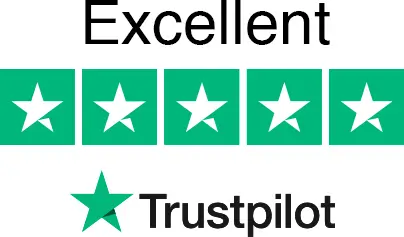Key Takeaways
- Understanding allowable deductions for capital gains tax (CGT) on UK property ensures you reduce your CGT bill and avoid overpaying HMRC.
- You can deduct genuine costs such as purchase price, stamp duty, legal fees, estate agent fees, and qualifying property improvements. Day-to-day maintenance and running costs generally are not deductible.
- Meticulous evidence-gathering and retention—including digital receipts—are vital to audit-proof your capital gains tax submission.
- Failing to claim allowable expenses, or incorrectly claiming non-deductible items, can result in HMRC disputes, penalties, and higher tax bills.
- Only works that improve or extend the property are deductible; routine repairs and maintenance are not.
- Key CGT rules like principal private residence relief may exempt all or part of your gain if you have lived in the property—specific eligibility matters.
- Using a full, up-to-date checklist of CGT deductions means you won’t overlook claimable expenses at sale.
- Go-Legal AI offers tailored guidance and digital tools to help claim every deduction, keeping your filing stress-free and fully compliant.
Complete Checklist: Allowable Deductions for Capital Gains Tax on UK Property
When selling property in the UK, it’s easy to miss costs you’re entitled to deduct. Many landlords, business owners, and private sellers overpay capital gains tax because they’re unsure which expenses qualify or they lack the evidence HMRC expects.
Understanding allowable CGT deductions for UK property is crucial for anyone—whether you’re selling a rental, business premises, or your main home. Accurate claims mean a lower tax bill and less risk of compliance headaches; mistakes can cost thousands or expose you to HMRC scrutiny.
You’ll discover below the core costs you can and cannot claim, including stamp duty, legal and agent fees, property improvements, and robust record-keeping requirements. You’ll also get practical checklists, real-world examples, and expert tips to help you audit-proof your CGT calculations. With our smart tools, you can build a fully compliant deduction file—giving you total confidence at tax time.
What Are Allowable Deductions for Capital Gains Tax on UK Property?
Allowable deductions are legitimate costs you subtract from your gains when selling or disposing of property. These reduce your “chargeable gain” and directly lower your capital gains tax bill. HMRC only accepts deductions directly related to buying, improving, or selling the property.
Getting deductions right is essential: claim every eligible cost to cut your CGT responsibly, but avoid over-claiming, which can trigger investigations or penalties.
Typical allowable deductions include:
- Costs of purchase and sale (legal/conveyancing fees, agent fees)
- Stamp Duty Land Tax (SDLT) paid when buying
- Qualifying structural improvements and enhancements
- Professional survey or valuation fees necessary for the transaction
- Advertising costs to market the property
Remember, these deductions are different to the CGT annual exempt amount—currently £6,000 for individuals (2023/24)—which is a separate tax-free threshold claimed after expenses.
Retain detailed proof (invoices, receipts, certificates) for all deductible expenses. Claims lacking clear documentation are high-risk and often disallowed by HMRC. Our digital tools make evidence-gathering simple and secure.
Allowable vs Non-Allowable Deductions: What Can You Claim for CGT?
Distinguishing between claimable and non-claimable costs is crucial. HMRC allows deduction of costs that relate to purchasing, improving, or disposing of a property—but not general upkeep or running costs.
Allowable Deductions:
- Stamp Duty Land Tax (SDLT) at purchase
- Estate agent and solicitor/conveyancer fees (buying and selling)
- Capital improvements (building extensions, new bathrooms, permanent upgrades)
- Professional valuations and required surveys
- Planning permission and architects’ fees for approved improvements
- Advertising the property for sale
Non-Allowable Costs:
- Routine maintenance and repairs (painting, tiling, repairs)
- Mortgage interest or loan repayments
- Council tax, utility bills, insurance premiums
- Costs already claimed for income tax (e.g. letting agent fees for rental)
- Fines, penalties, or any unrelated expenditure
A landlord, Mr. Davies, attempts to deduct £2,000 for repainting his flats before sale. HMRC flags this: decorating is routine maintenance, not a property improvement, so the claim is refused. Mr. Davies must repay any underpaid tax and receives a compliance warning.
Complete Checklist of Claimable Expenses for Property CGT
To ensure every eligible deduction is captured, use the checklist below when preparing your CGT calculation. This helps prevent expensive errors or missed claims.
Checklist: Allowable Deductions for CGT on UK Property
| Expense Type | Allowable | Evidence Required |
|---|---|---|
| Solicitor/legal fees (buy/sell) | ✅ Yes | Invoice or completion statement |
| Estate/selling agent fees | ✅ Yes | Invoice or bank record |
| Stamp Duty Land Tax (SDLT) | ✅ Yes | SDLT certificate |
| Planning and application fees | ✅ Yes | Council or architect receipts |
| Capital improvements (e.g. extensions) | ✅ Yes | Builder/architect invoice |
| Advertising fees for sale | ✅ Yes | Ad invoice |
| Valuation/survey fees (sale-related) | ✅ Yes | Surveyor invoice |
| Routine repairs/maintenance | ❌ No | N/A |
| Mortgage interest | ❌ No | N/A |
| Utility/council tax bills | ❌ No | N/A |
| Letting agent management fees | ❌ No† | N/A |
† Only deductible against rental income, not CGT.
Go-Legal AI’s guided digital checklist ensures you don’t miss out on deductible expenses—saving you time, tax, and unnecessary hassle.
⚡ Get legal tasks done quickly
Create documents, follow step-by-step guides, and get instant support — all in one simple platform.
🧠 AI legal copilot
📄 5000+ templates
🔒 GDPR-compliant & secure
🏅 Backed by Innovate UK & Oxford
Key Deductions Table: What Costs Can I Offset Against Capital Gains Tax?
Understanding why each deduction matters helps you defend your claim and avoid compliance headaches.
| Cost/Component | What It Covers | Why It’s Essential |
|---|---|---|
| Stamp Duty (SDLT) | Tax paid at purchase | Reduces taxable gain, often a major expense |
| Solicitor/Legal Fees | Conveyancing and related legal costs (buy/sell) | Cannot legally complete sale without these |
| Estate Agent/Sales Fees | Commission or fixed fees to secure a buyer | Substantial outlay directly linked to disposal |
| Property Improvements | Permanent upgrades (e.g. room additions, new roof) | Increases cost base, lowering your gain |
| Valuation/Surveyor Fees | Reports needed for sale, tax or mortgage | Often essential and HMRC-recognised |
| Planning/Architects Fees | Costs for approved structural or planning work | Evidence of major enhancements, not repairs |
| Advertising for Sale | Fees to market property (online, print, agency) | Proves active effort to sell (key for HMRC) |
A landlord selling a buy-to-let property claims £9,500 stamp duty, £3,000 for a loft extension, and £2,500 solicitor’s fees on sale. Each is legitimate—making a sizeable difference to the final CGT bill.
Always store original VAT invoices and payment evidence. If you reclaim VAT separately, don’t double-claim for CGT. Go-Legal AI’s secure platform links your claims to digital proof, making audits quick and painless.
Maintenance vs Improvements: Which Costs Are Deductible for CGT?
HMRC differentiates strictly:
- Maintenance/Repairs (Not Deductible):
Costs aimed at keeping the property in working order (e.g., painting, replacing broken windows, mending pipes) cannot be offset against your capital gain. - Improvements (Usually Deductible):
Expenditure that adds value, upgrades features, or extends the building—such as a new conservatory, conversion, or replacing a single-glazed window with double glazing for the first time—these may be deducted.
Helen adds a £11,000 conservatory to her home—this is a capital improvement and deductible against CGT. She also spends £600 repainting her kitchen: routine maintenance, so not deductible.
Document whether costs are repairs or bona fide improvements, and keep plans, invoices, and photos to justify your claim if HMRC asks.
Step-by-Step Guide: How to Calculate CGT Allowable Deductions on a Property Sale
Calculating your CGT liability correctly can dramatically reduce your tax burden. Follow these steps:
- Work out your sale proceeds: The amount you receive for the property.
- Subtract what you paid to buy: Original purchase price.
- Deduct direct purchase costs: Stamp duty, legal and survey fees.
- Deduct improvements during ownership: Only qualifying, value-adding works.
- Deduct sale-related costs: Estate agent, legal fees, required valuations, and advertising.
- Calculate your chargeable gain: Deduct total expenses from proceeds. Subtract your annual CGT allowance.
- Apply the correct CGT tax rate: As of April 2024: 18%/24% (residential), or 10%/20% (other UK property).
Dan sells his buy-to-let flat for £420,000, bought for £280,000. He paid £11,000 SDLT, £4,000 legal fees, £30,000 for a loft conversion, and £8,000 selling costs.
His chargeable gain is £420,000 – £280,000 – £11,000 – £4,000 – £30,000 – £8,000 = £87,000.
If Dan missed the deduction for his £30,000 improvement, he would pay thousands more in tax unnecessarily—showing the value of good records and checklists.
How to Gather and Keep the Right Evidence for HMRC (Including Digital Receipts)
HMRC expects documentary evidence for every claim in your CGT calculation, and digital receipts are fully acceptable as long as they’re complete and readable.
Key evidence includes:
- Original invoices/receipts for allowable legal, agent, planning, and improvement costs
- Bank statements proving payment
- SDLT certificates and completion statements
- Planning permission and completion certificates
- Electronic records and clear digital images (unaltered, properly labelled)
Best Practices for Record-Keeping:
- Scan or photograph paperwork immediately and name with property, date, and expense type.
- Use cloud or legal tech storage (such as Go-Legal AI’s document manager) so nothing is lost.
- Retain all evidence for at least six years (HMRC investigation window), or up to 20 years if there is suspected evasion.
Never rely solely on bank statements as evidence. HMRC usually demands full invoices and may decline poorly documented claims. Go-Legal AI helps link each deduction to robust, HMRC-grade evidence—store everything in one place.
Common Mistakes Property Sellers Make with CGT Deductions (and How to Avoid Them)
Many UK sellers fall into these CGT traps:
- Deducting repairs or maintenance (not allowed):
Only improvements count.
Solution: Check if the cost adds permanent value or is just routine. - Incomplete or unclear evidence:
Part-receipts, faded printouts, or undocumented bank transfers may be disallowed.
Solution: Use digital tools to collect and store full receipts with every claim. - Missing allowable costs:
Stamp duty or legal fees during purchase are often missed if bought via a mortgage broker.
Solution: Cross-reference expenses with a thorough template. - Failing to record the distinction between improvement and repair:
Especially if doing pre-sale works.
Solution: Keep a contemporaneous record of all works, with clear descriptions and invoices.
If errors are spotted before submitting your tax return, correct them in your online filing. After submission, you have twelve months to amend. If in doubt, voluntarily notify HMRC—it can reduce penalties if a compliance check follows.
CGT Deductions for Special Situations: Buy-to-Let, Mixed-Use, and Former Homes
Different property uses affect allowable CGT deductions:
- Buy-to-Let:
Most core purchase, improvement, and sale costs are claimable, but routine maintenance and letting fees (already claimed against rental income) are not. - Mixed-Use Properties:
Split capital improvements and costs between residential and commercial portions, usually by area or usage time. - Former Homes (Principal Private Residence Relief):
You may claim partial or full relief for time the property was your main residence plus the last nine months. Only improvements relating to non-exempt periods are fully deductible.
Sarah owned a terraced house for nine years, living in it for six and renting for three. A loft extension built during occupation (£18,000) is fully deductible. Carpet replacement pre-letting (£1,300) counts as maintenance and isn’t deductible for CGT.
If you’re a landlord and incurred major renovation costs, check if VAT can also be reclaimed and ensure no double-claim is made for both income and gains.
How Go-Legal AI Simplifies Allowable Deductions for CGT on UK Property
Managing capital gains tax on property can be complex, but our platform simplifies every step:
- Guides you with smart prompts to capture every allowable deduction, tailored to your property type.
- Generates a digital, audit-ready evidence file for every expense, including digital receipts.
- Offers a customisable checklist—perfect for residential, buy-to-let, or mixed-use property.
- Integrates a simple CGT deduction calculator, so you never miss a cost or make a risky claim.
- Identifies potential red flags, suggests missing evidence, and stores your submission-ready file securely.
A small business owner used our evidence management tool to upload invoices, link receipts to each property, and export a compliant deduction list for their accountant—cutting their tax bill and stress in half.
Frequently Asked Questions
Can I deduct stamp duty and solicitor fees from my CGT calculation?
Yes, both stamp duty paid on purchase and legal fees for buying and selling the property are fully allowable. Store clear documentation for every claim.
Are surveyors’ or valuation fees allowable for CGT?
Yes, if directly connected to the purchase or sale process. Survey or valuation fees for mortgage purposes or sale appraisals qualify.
How far back can I claim property improvement expenses?
You can claim eligible improvements made any time during your ownership, if you have proof that the improvement is still present at the time of sale.
Does HMRC accept digital receipts as proof for CGT deductions?
Yes, as long as the digital receipt or scan is unaltered, complete, and clearly linked to your property and expense type. Use our platform to ensure everything is correctly archived.
What should I do if I’ve lost receipts for allowable costs?
Gather alternative evidence (like bank statements, emails, photographs) and provide a detailed explanation. HMRC may still allow the claim if your evidence is reasonable.
What if I lived in the property for only part of the ownership period?
You may qualify for principal private residence relief covering the time you lived in the property, plus up to nine months’ grace at the end. The rest of your gain is apportioned.
Can I deduct VAT paid on renovation work for CGT purposes?
Yes, provided you have not already reclaimed that VAT and the work qualifies as a property improvement.
How do I claim CGT deductions for inherited or gifted property?
Use the property’s market value at the date of inheritance or gift as your “acquisition cost.” Only improvements and sale expenses incurred after that date are claimable.
Are letting agent fees deductible for CGT?
No, management fees for letting are not claimable for CGT if you already claimed them against income tax. Sales-related letting fees (to dispose of the property) are deductible.
What costs are most commonly missed by UK property sellers?
Stamp duty, initial purchase legal fees, and planning or architect’s costs for property improvements. Our digital checklist cross-references these so nothing is overlooked.
Create Your Capital Gains Tax Deductions Checklist with Go-Legal AI Today
With the complexity of HMRC rules and strict evidence standards, missing a single allowable cost or misclassifying an expense can mean overpaying tax or triggering a compliance check. Our AI-powered tools walk you through every step—ensuring you capture all eligible deductions, store robust evidence, and export a summary ready for your adviser or digital tax submission.
Avoid stress and unnecessary tax bills with an automated, exportable CGT deduction checklist built with our platform—trusted by hundreds of property sellers and business owners across the UK.
Maximise Your Capital Gains Tax Savings with Go-Legal AI
Claiming all allowable deductions for capital gains tax on UK property is key to protecting your profits and staying fully compliant. If you overlook eligible costs or claim the wrong items, you risk overpaying or attracting unwanted HMRC attention. With our evidence-backed checklists, step-by-step guides, and legally rigorous approach, you can approach any property sale with confidence.
Stop losing out on tax savings due to paperwork errors or uncertainty. Our tailored, user-friendly platform empowers you to record every eligible expense, organise evidence, and create an HMRC-ready CGT file—fast. Start your free trial today and see how much you could save on your next property transaction.
⚡ Get legal tasks done quickly
Create documents, follow step-by-step guides, and get instant support — all in one simple platform.
🧠 AI legal copilot
📄 5000+ templates
🔒 GDPR-compliant & secure
🏅 Backed by Innovate UK & Oxford










































